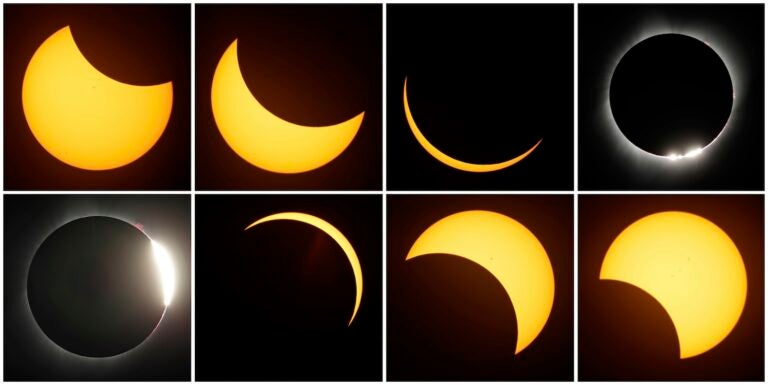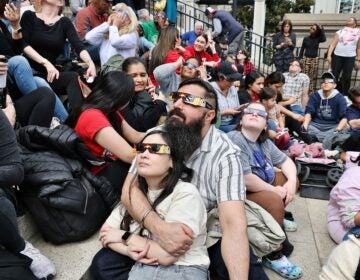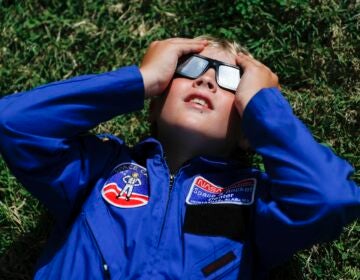Not in the path of totality? You can still watch Monday’s total solar eclipse online
Here are some alternatives if you're clouded out during the eclipse or if you can't travel to the path.

This combination of photos shows the path of the sun during a total eclipse by the moon Monday, Aug. 21, 2017, near Redmond, Ore. (AP Photo/Ted S. Warren, File)
What you need to know
- During the eclipse, Drexel researchers will be sending a balloon into the stratosphere to measure ozone, and University of Delaware students will be part of a NASA experiment
- Check to see if you’re in the path of totality, or join “Morning Edition” host Jennifer Lynn for WHYY’s Solar Viewing event!
- Here’s where you can watch the eclipse in Philly, and here’s what’s going on in Chester County
- But be prepared: Watching a solar eclipse without the right filters can cause eye damage. Here’s why
- And if clouds or rain are in your forecast, here’s how to still enjoy the eclipse
If you’re nowhere near the path of totality or if clouds spoil your view, you can still catch the total solar eclipse online.
Weather permitting, tens of millions who live along a narrow stretch from Mexico’s Pacific coast to eastern Canada can just look skyward Monday to glimpse day turn to twilight when the moon blots out the sun.
Eclipse glasses are a must to prevent eye damage. The only time it’s safe to ditch protective glasses is during totality, or the few minutes of complete darkness.
NASA goes live from different eclipse cities
NASA is offering several hours of streaming online and on NASA TV starting at 1 p.m. EDT from several cities along the totality path. The space agency will show telescope views of the sun and there will be appearances by scientists and space station astronauts. During the eclipse, small rockets will blast off from Wallops Island, Virginia, with science instruments into the electrically charged portion of the atmosphere near the edge of space known as the ionosphere.
AP hosts live show from totality path
Associated Press journalists will fan out along the path of totality to bring live coverage of watch parties and festivities. The AP livestream will start at 10 a.m. EDT with views from Mazatlán, Mexico, and other locations. Commentary will run from 1:30 p.m. to 3:30 p.m. EDT featuring interviews with organizers, scientists and live views from along the path.
Telescopes and experiments focus on the sun
The Exploratorium museum will feature live telescope images of the sun from Junction, Texas, and Torreón, Mexico. Researchers and students from the University of Maine will launch high-altitude balloons in an experiment that will be livestreamed from the stratosphere. Time and Date will show the sun from different telescope feeds. Slooh will broadcast from Texas and will have a network of partner telescopes along the path.
___
The Associated Press Health and Science Department receives support from the Howard Hughes Medical Institute’s Science and Educational Media Group. The AP is solely responsible for all content.
WHYY is your source for fact-based, in-depth journalism and information. As a nonprofit organization, we rely on financial support from readers like you. Please give today.




